News
On Location in Blairstown: The Making of Friday the 13th
Toward the end of August 1979, the bulk of Friday the 13th’s cast and crew, those that weren’t already on location, arrived in Blairstown, New Jersey. They all anticipated the start of principal filming (some additional filming had taken place at the campsite, and around Blairstown, beginning on August 20, 1979, with a partial crew) which commenced on September 4, 1979, the day after Labor Day.

They were greeted by Sean Cunningham and Steve Miner who – along with Barry Abrams, Virginia Field, Tom Savini, and a few other members of the technical crew – had already set-up shop at the main Camp-No-Be-Bo-Sco filming location.
Cunningham and Miner had worked out a deal with the camp’s proprietors – involving a modest “rental fee” – that gave the Friday the 13th production free run of the place throughout the months of September and October. Effects expert Savini, along with his assistant and friend Taso Stavrakis, immediately designated one cabin as Savini’s makeup cabin to house Savini’s effects creations throughout filming, along with Savini’s invaluable barbershop chair. Most of Friday the 13th’s cast members, those whose characters were killed in the story, would end-up sitting for hours in this chair while Savini worked his effects magic.
Savini also commandeered the camp’s cafeteria location for his effects work, particularly the oven which he used to bake his creations. “Me and my small crew stayed at the campsite and we pretty much had the run of the place,” Savini recalls. “I set-up a Beta machine in one of my cabins and we’d watch movies when we weren’t working. The cast and crew stayed at nearby hotels and motels, but after awhile, a lot of them would hang-out at the cabins with us because we were having so much fun.”
Virginia Field set up shop in another cabin, along with her small design unit, for construction and drafting work. “From the day me and my team arrived on location for the start of filming, we started working in the cabin for twenty hours a day, throughout the filming,” Field recalls. “I didn’t get to watch much of the filming, or party with the rest of the crew, because me and my crew were always working. I spent most of the time drafting designs for materials that we still needed for the film. Chairs, knives, signs, tables, those kinds of things.”

The core of Friday the 13th’s technical crew – namely Barry Abrams and his crew of followers – had recently come-off of working on the film The Children, and they were tired. Some of them had returned to New York – to the village – and then made the 80 mile trip to Blairstown while others had travelled directly in from the Berkshires. Others, like Cecelia and John Verardi, a married couple who lived in Staten Island, walked away from their normal lives completely in order to blindly travel to Blairstown. They wanted to be part of the wacky, uncharted adventure that was the making of Friday the 13th.
Cecelia Verardi would perform many tasks on Friday the 13th – gofer, hairstylist, liaison between the cast members and the production, makeup effects assistant, makeup girl, production assistant – while husband John Verardi was a cameraman. “John, my husband, was working at Panavision in New York, and I was going to school to become a lawyer, and had been working at Estee Lauder, when John and I heard about Friday the 13th,” Cecelia Verardi recalls. “John was offered a management position at Panavision when Barry Abrams called up. We lived in Staten Island, which is about twenty miles from the village where Barry and his crew were based. John called me one day and asked me if I wanted to quit my job, quit school, and go to New Jersey and be a production assistant on this low budget movie. I didn’t know what a production assistant was and John told me that I’d basically be a gofer.”
While most of the crew came from New York, Cunningham and Miner also brought several crew members in from their Westport base of operations. They included Denise Pinckley, who ran Friday the 13th’s modest-looking production office at the campsite, and fourteen year old actor Ari Lehman who was cast as Jason Voorhees. Cunningham’s wife, Susan, also made the trip along with their son, Noel. A skilled film editor, Susan E. Cunningham established a makeshift editing bay at the campsite. She worked there throughout the filming, editing the film often simultaneous to the actual filming of scenes. Miner was originally supposed to edit Friday the 13th. But with Susan Cunningham handling the film’s editing, Miner was free to devote his energies entirely to his role as Friday the 13th’s producer, in tandem with Cunningham. Miner would don many hats throughout filming.
Susan Cunningham’s constant presence throughout filming was indicative of the family atmosphere that existed on Friday the 13th. Besides Noel and Susan Cunningham’s presence, Barry Abrams’ son, Jesse Abrams, was also in Blairstown. Wes Craven also appeared in Blairstown, along with his son, Jonathan.

The cast and crew of Friday the 13th arrived in Blairstown either by car or vans, but also often by bus, either through a commercial bus service or a chartered company bus that Cunningham secured for the production. Later on, during breaks in filming, Cunningham himself would often drive people – such as cast and crew members – to Blairstown from Connecticut or New York.
Cunningham’s ability to travel to and from Blairstown was a testament to the trust that he placed in Abrams and Miner, especially. There was also the specter of the casting of the Pamela Voorhees’ role, a dilemma that festered through the first two weeks of Friday the 13th’s filming schedule, and ultimately necessitated Cunningham to have to leave the Blairstown location in order to deal with this issue himself.
If the Friday the 13th production wore-out the 80 mile stretch of road from New York City to Blairstown, the arrival of Friday the 13th’s cast and crew in Blairstown represented a mini-occupation for the township of roughly 4000 people. After securing an agreement with Camp No-Be-Bo-Sco for use of the campsite prior to filming, Cunningham and Miner also met with the township’s leaders in order to foster cooperation and goodwill between the production and Blairstown. “Sean and Steve showed up in town before the start of filming and met with the town elders about the film,” recalls Richard Skow who was the Blairstown Fire Chief at the time of Friday the 13th’s filming and whose son appeared as one of the sleeping campers in the film’s opening pre-credit sequence. “Sean explained that he was making a horror film at the camp and asked if he could use some fire-trucks and police cars for certain scenes in the film. Sean was very friendly, very respectful, and we never had any problems with them during the filming.”
Cunningham and Miner were able to secure the use of a fire-truck and several police cars, luxuries they never could’ve afforded were it not for Cunningham’s charm and personal touch. The firetruck was especially useful for creating rain effects. In addition, Cunningham was granted the free use of Blairstown locations to film around. “Sean was smart enough to arrive in town before filming and schmooze the town elders so they would let him use the town’s resources for the film,” says art director Robert Topol. “He made friends with the townspeople, and with the cast and crew. Sean had that way about him. He’d shake your hand, and smile at you, and make you feel like you were an important person. He always knew your name, even if he was just introduced to you. He always knew everyone’s name.”
At the time of Friday the 13th’s filming, Camp No-Be-Bo-Sco was under the control of Fred Smith, a local bicycle shop owner who’d served as a Ranger since 1967. Smith, who died in 1985, was an old man at the time of Friday the 13th’s filming. He oversaw the land with the help of his young son, and was very protective of both the campsite and its reputation. He was wary at the prospect of a film being shot at the campsite. Cunningham’s charm and personable nature carried the day here in terms of winning over Smith – who was an entertained, happy spectator to much of Friday the 13th’s filming – to the idea of having Friday the 13th at the campsite. Smith, however, was never made fully aware of just what kind of film Cunningham and his cast and crew were making. “It was a very beautiful area, very scenic,” Harry Crosby recalls. “It felt like we were isolated from the rest of the world, which I think helped the movie.”

“What I remember most about the New Jersey location is the beautiful terrain,” Peter Brouwer recalls. “My girlfriend and I would always go hiking along the Appalachian Trail and we loved going into the woods. It wasn’t scary at all.”
“My fondest memory would probably be when we first started the film and it was still warm and sunny and all of us were together for the first time,” said Adrienne King. “Myself, Kevin Bacon, Harry Crosby, Mark Nelson, Jeannine Taylor and the others. We had a great time together; we were all in our twenties and were all so excited about working together. Even though it was such a low-budgeted film and we didn’t even know if it would even be completed or not! The sun was still shining and we really got to know each other well and it really felt like being away at summer camp.”
“We would drive up from Connecticut to the Delaware Water Gap in New Jersey, and one time I took the bus the whole way there,” recalls Ari Lehman. “The countryside is beautiful there, and the camp was situated deep in the woods. Once we arrived, there was convivial, communal working-artist energy. The cast and crew were from NYC, and they would listen to Patti Smith and the Ramones very loudly on their car stereos. It was 1979 and it was fun.”
“It was a beautiful location, very tucked away, and very rural,” Daniel Mahon recalls. “The camp was closed, obviously, when we arrived and we moved into the barracks while the union crew stayed at the motel. The camp had a very rustic feeling, with log cabins, and the plumbing was Geririgged prior to filming. Fred Smith was the manager of the summer camp and basically controlled the physical plant on which the camp was located. Fred was an expatriate and a real character. He kept talking about his neighbor, Lou, and eventually we discovered that the Lou he was talking about was Lou Reed, the famous musician who lived nearby!”
“The camp was cool,” soundman Richard Murphy recalls. “Lou Reed had a farm nearby and he would come by during the filming and he played music around us. We got to watch Lou Reed play for free, right in front of us, while we were making the film! He came by the set and we hung around with each other and he was just a really great guy. Friday the 13th was all about getting to hang-out in the woods with a bunch of close friends. We were close, close friends sharing our deepest secrets with each other.”
“I remember that I took a company bus to the filming location, and that Laurie Bartram and Harry Crosby were on the bus with me,” Mark Nelson recalls. “It was a nice trip, very scenic, and the three of us got to know each other a bit which I think helped us during filming in terms of developing some chemistry with each other.”
“Blairstown was a little rundown at that time,” recalls gaffer Tad Page. “There were small farms and people had guns! I loved the camp. The camp was very nice. There were deer running around. We were basically a bunch of city kids, New Yorkers, who were completely out of our element, and looking for action in this isolated place. We were always looking for action after work.”
“Blairstown was a very rural place, with lots of hills and valleys, as well as some nice weekend places where people from the city would go,” key grip Robert Shulman recalls. “It was a smooth 80 mile drive from Manhattan, the village, where all of us were from. By this point, we’d become this traveling crew, under Barry, so we were ready to go on a moment’s notice. We were young, and ready to have a great time making a movie at summer camp!”
The cast and crew of Friday the 13th represented wildly varying levels of competence and experience. This was especially visible in the crew which was comprised of both union and nonunion members. While the actors in Friday the 13th worked under SAG (Screen Actors’ Guild) conditions, the film itself was a non-union production.
The crew worked on a pay scale that ranged from between 100 to 750 dollars a week. Abrams and his travelling crew from New York did not divulge to their unions that they were doing Friday the 13th. “I never told my union I was doing Friday the 13th because I knew they would’ve punished me for doing a non-union movie like that,” recalled Abrams, who had joined the IATSE (International Alliance of Theatrical Stage Employees) camera union prior to Friday the 13th, whereas most of the rest of his crew were with the rival NABET (National Association of Broadcast Employees and Technicians) union that Abrams, ever the maverick, had recently left.
“None of us told the union we were doing Friday the 13th because we knew they would’ve fined us, especially me since I was in charge of the crew.”
The “privileges” that Abrams and his production crew enjoyed on Friday the 13th included not only higher paychecks – with Abrams and camera operator Braden Lutz, both of whom oversaw the technical crew, topping out in the $750 dollar a week range – but also with slightly better living conditions.
While most of the junior and non-union crew members joined Savini at the campsite’s cabins, Abrams and his group of colleagues and friends stayed at a two-story truck-stop motel in nearby Columbia, New Jersey, about a twenty minute drive from the campsite. At first sight, the motel – called 76 Truck Stop – wasn’t much of an attraction, especially since the motel, in keeping with its truckstop designation, was adjacent to a vast stretch of highway road that was home to an endless stream of big, noisy trucks that rambled up and down the road, back and forth, day and night.
A vestige of the CB radio craze that swept across America in the mid to late 1970s, catapulted by the blockbuster success of the film Smokey and the Bandit (1977), the motel (which exists today as a Travel Centers of America location, complete with various amenities) was crawling with CB radios but offered no television for the crew to enjoy. The only luxury the motel featured was a twenty-four hour luncheonette.
Blairstown itself was, as mentioned, a depressed community and scarcely offered the cast and crew of Friday the 13th any exciting choices during off-hours. Against this bland backdrop, Abrams and his crew turned the motel into their own fall version of a spring break party motel, complete with the requisite alcohol, drugs and sex. The sex was in much lower quantities (the males far outnumbering the females on the crew) than the alcohol and drugs the crew would absorb throughout Friday the 13th’s filming. The atmosphere at the motel was rowdy and wild.
While Abrams and his crew worked effectively and extremely hard throughout filming, their partying equaled this. Not even an independent production like Friday the 13th – in an isolated place like Blairstown – was immune from the alcohol and drug-fueled atmosphere that was pervasive on seemingly all film and television productions throughout the late 1970s and early 1980s. Blairstown’s remote location, and a complete lack of supervision, made for an especially toxic atmosphere throughout filming.
The crew of Friday the 13th liked to work hard and party hard; they could take it. As much as the motel shenanigans embodied the filmmaking culture in 1979, it was also emblematic of the close friendship that existed amongst Abrams and his crew of friends.
They were young (Abrams was one of the elders on the Friday the 13th crew at 35 years old), wild, and full of energy. They were happy to be alive and making a movie, especially together. “We had parties at the motel throughout the filming,” Abrams recalled. “We’d drink beer every night, and we just took the place over. It got pretty wild, but we were working hard, and we were all friends. In those days, we were working out our lighting diagrams for the next day’s filming on napkins at the truck-stop where the camera crew ate breakfast after the long nights, although we had done a master plan for the main locations in pre-production.”
“The motel was right off the highway and if you walked outside you had to be careful because you could get hit by the trucks that were always flying by,” James Bekiaris recalls. “We mostly used the motel to get our meals, drink, party. To get any action around there, we had to go to nearby Strasburg, Pennsylvania.”
“The Martin Sheen drinking scene in Apocalypse Now would be a good description of what it was like at the motel during filming,” Richard Murphy recalls. “It was a gorgeous area that we were in, but it was a very noisy truck-stop motel with all of the traffic moving around us. We would be partying at six in the morning sometimes. We were a bunch of hard-drinking guys. I recall that Betsy Palmer stayed there when she arrived later on during filming, and that some of the other actors stayed there. Barry and I thought about leaving and moving into the cabins after a couple of weeks, but we all stayed. A lot of the fun we had was a result of the fact that we were all close, close friends. Sean had a young kid and a wife and didn’t stay at the motel, and neither did Steve. The actors partied with us, except for Walt Gorney who was at least thirty years older than the rest of us. We didn’t really want to hang-out with him.”
“We were young and crazy and had wild parties at the motel,” Tad Page recalls. “I don’t recall the actors ever joining us at the motel for the parties. Most of us stayed at the truck-stop motel right off of Route 80, so that was not as rustic as the rest of Blairstown, but Braden [camera operator Braden Lutz] moved into one of the cabins by the lake at Camp No-Be-Bo-Sco.”
“The truck-stop motel was wild,” David Platt recalls. “We sat around and drank rum and orange juice and had parties. We’d have beer and eggs in the morning and at night, depending on if we’d been filming at day or night. Usually, it didn’t matter. A lot of times we’d wake-up at eleven or twelve in the afternoon, party and then sleep for three or four hours and then go to work. My big thing was trying to learn to operate the Boom mike, without looking incompetent, because I really didn’t know the fucking job and I was very much learning on the job.”
“Every night we’d all gather in the same room and party,” Robert Shulman recalls. “It was about thirty minutes from the motel to the camp location. The truck-stop motel had a twenty-four luncheonette which was great, but the downside was that there were all of these CB radios at the motel which meant there was no TV. Braden Lutz, who battled alcoholism and substance abuse, decided to stay in a cabin on the other side of the lake. He wasn’t the only one who was battling that stuff. Barry was doing a lot of stuff, and so were most of us. Everyone did drugs.”
“John [cameraman John Verardi] went ahead to Blairstown and forgot to leave a note at the motel about me so when I arrived at the motel, the manager wouldn’t let me in,” Cecelia Verardi recalls. “I had to sit there from two in the afternoon until eleven at night before I got into the room. I believe that Laurie [Laurie Bartram] stayed at a hotel and some of the others stayed at the cabins. Actually, I recall that Jeannine [Jeannine Taylor] and Laurie stayed at the cabins initially and then moved to a hotel. I recall that Adrienne [Adrienne King] stayed at a hotel in Connecticut. The unit all stayed together, except for Sean and his family who stayed at Adrienne’s hotel. It was a tight circle of friends at the motel. The rest of the production assistants on the film, the production assistant unit, stayed together at the camp where you’d often see them all laid-out on the floor in the cabins.”
Cunningham – especially with his family in tow – wanted nothing to do with the shenanigans that existed amongst the crew at the motel. In fact, both Cunningham and Miner recall staying at the campsite, with Savini and the other minions, although Cunningham and Miner also commuted to nearby Connecticut during filming. “We were shooting at a Boy Scout camp,” Cunningham recalled. “We had no money and we were sleeping, literally, in cabins; cabins with no heat and outdoor plumbing, and it got cold at night.”
The preceding excerpt was taken from the book On Location in Blairstown: The Making of Friday the 13th, which is available in kindle and print.
'Civil War' Review: Is It Worth Watching?
Follow our new YouTube channel "Mysteries and Movies" here.

Movies
Trailer for ‘The Exorcism’ Has Russell Crowe Possessed
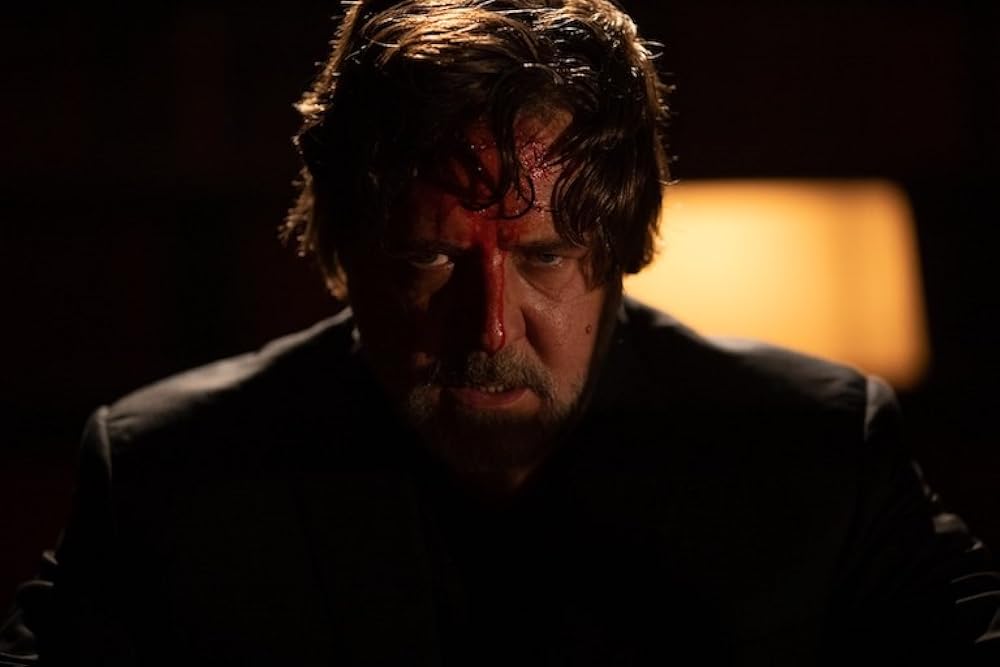
The latest exorcism movie is about to drop this summer. It’s aptly titled The Exorcism and it stars Academy Award winner turned B-movie savant Russell Crowe. The trailer dropped today and by the looks of it, we are getting a possession movie that takes place on a movie set.
Just like this year’s recent demon-in-media-space film Late Night With the Devil, The Exorcism happens during a production. Although the former takes place on a live network talk show, the latter is on an active sound stage. Hopefully, it won’t be entirely serious and we’ll get some meta chuckles out of it.
The film will open in theaters on June 7, but since Shudder also acquired it, it probably won’t be long after that until it finds a home on the streaming service.
Crowe plays, “Anthony Miller, a troubled actor who begins to unravel while shooting a supernatural horror film. His estranged daughter, Lee (Ryan Simpkins), wonders if he’s slipping back into his past addictions or if there’s something more sinister at play. The film also stars Sam Worthington, Chloe Bailey, Adam Goldberg and David Hyde Pierce.”
Crowe did see some success in last year’s The Pope’s Exorcist mostly because his character was so over-the-top and infused with such comical hubris it bordered on parody. We will see if that is the route actor-turned-director Joshua John Miller takes with The Exorcism.
'Civil War' Review: Is It Worth Watching?
Follow our new YouTube channel "Mysteries and Movies" here.
News
Win a Stay at The Lizzie Borden House From Spirit Halloween

Spirit Halloween has declared that this week marks the start of spooky season and to celebrate they are offering fans a chance to stay at the Lizzie Borden House with so many perks Lizzie herself would approve.
The Lizzie Borden House in Fall River, MA is claimed to be one of the most haunted houses in America. Of course one lucky winner and up to 12 of their friends will find out if the rumors are true if they win the grand prize: A private stay in the notorious house.
“We are delighted to work with Spirit Halloween to roll out the red carpet and offer the public a chance to win a one-of-a-kind experience at the infamous Lizzie Borden House, which also includes additional haunted experiences and merchandise,” said Lance Zaal, President & Founder of US Ghost Adventures.
Fans can enter to win by following Spirit Halloween‘s Instagram and leaving a comment on the contest post from now through April 28.
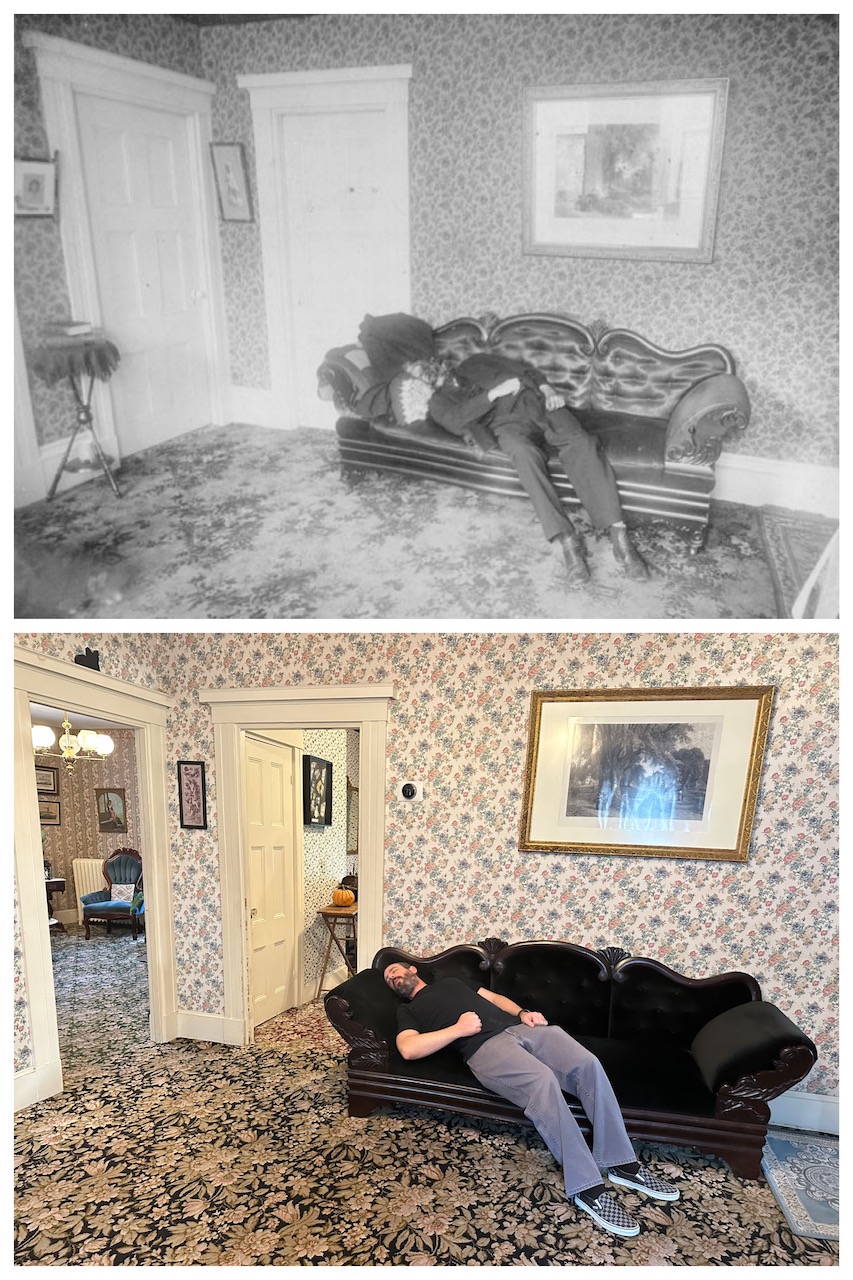
The prize also includes:
An exclusive guided house tour, including insider insight around the murder, the trial, and commonly reported hauntings
A late-night ghost tour, complete with professional ghost-hunting gear
A private breakfast in the Borden family dining room
A ghost hunting starter kit with two pieces of Ghost Daddy Ghost Hunting Gear and a lesson for two at US Ghost Adventures Ghost Hunting Course
The ultimate Lizzie Borden gift package, featuring an official hatchet, the Lizzie Borden board game, Lily the Haunted Doll, and America’s Most Haunted Volume II
Winner’s choice of a Ghost Tour experience in Salem or a True Crime experience in Boston for two
“Our Halfway to Halloween celebration provides fans an exhilarating taste of what’s to come this fall and empowers them to start planning for their favorite season as early as they please,” said Steven Silverstein, CEO of Spirit Halloween. “We have cultivated an incredible following of enthusiasts who embody the Halloween lifestyle, and we’re thrilled to bring the fun back to life.”
Spirit Halloween is also preparing for their retail haunted houses. On Thursday, August 1 their flagship store in Egg Harbor Township, NJ. will officially open to start off the season. That event usually draws in hordes of people eager to see what new merch, animatronics, and exclusive IP goods will be trending this year.
'Civil War' Review: Is It Worth Watching?
Follow our new YouTube channel "Mysteries and Movies" here.
Movies
’28 Years Later’ Trilogy Taking Shape With Serious Star Power
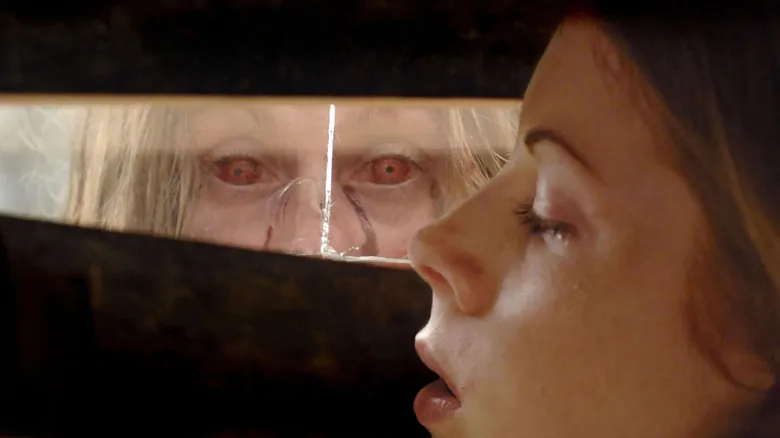
Danny Boyle is revisiting his 28 Days Later universe with three new films. He will direct the first, 28 Years Later, with two more to follow. Deadline is reporting that sources say Jodie Comer, Aaron Taylor-Johnson, and Ralph Fiennes have been cast for the first entry, a sequel to the original. Details are being kept under wraps so we don’t know how or if the first original sequel 28 Weeks Later fits into the project.

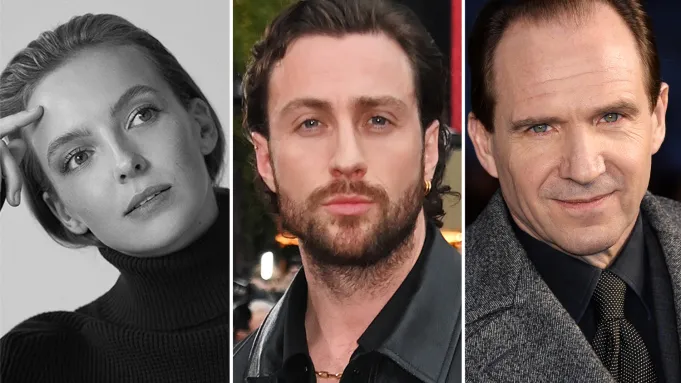
Boyle will direct the first movie but it’s unclear which role he will take on in the subsequent films. What is known is Candyman (2021) director Nia DaCosta is scheduled to direct the second film in this trilogy and that the third will be filmed immediately afterward. Whether DaCosta will direct both is still unclear.
Alex Garland is writing the scripts. Garland is having a successful time at the box office right now. He wrote and directed the current action/thriller Civil War which was just knocked out of the theatrical top spot by Radio Silence’s Abigail.
There is no word yet on when, or where, 28 Years Later will start production.
The original film followed Jim (Cillian Murphy) who wakes from a coma to find that London is currently dealing with a zombie outbreak.
'Civil War' Review: Is It Worth Watching?
Follow our new YouTube channel "Mysteries and Movies" here.
-

 News7 days ago
News7 days agoBrad Dourif Says He’s Retiring Except For One Important Role
-

 Strange and Unusual7 days ago
Strange and Unusual7 days agoMan Arrested for Allegedly Taking a Severed Leg From Crash Site And Eating It
-

 News5 days ago
News5 days agoOriginal Blair Witch Cast Ask Lionsgate for Retroactive Residuals in Light of New Film
-
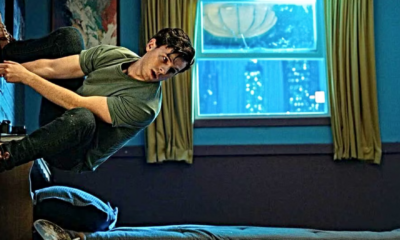
 Movies6 days ago
Movies6 days agoSpider-Man With a Cronenberg Twist in This Fan-Made Short
-
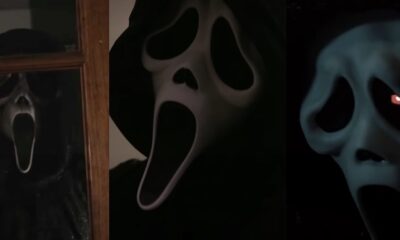
 Editorial7 days ago
Editorial7 days ago7 Great ‘Scream’ Fan Films & Shorts Worth a Watch
-
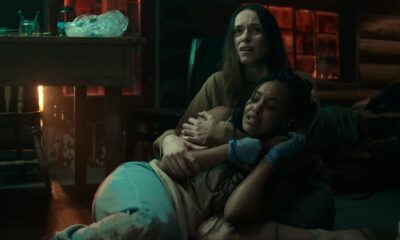
 Movies7 days ago
Movies7 days agoCannabis-Themed Horror Movie ‘Trim Season’ Official Trailer
-
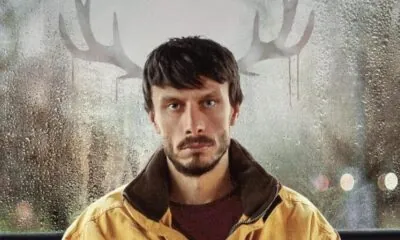
 News3 days ago
News3 days agoPerhaps the Scariest, Most Disturbing Series of The Year
-
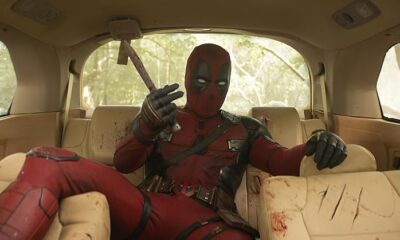
 Movies4 days ago
Movies4 days agoNew F-Bomb Laden ‘Deadpool & Wolverine’ Trailer: Bloody Buddy Movie

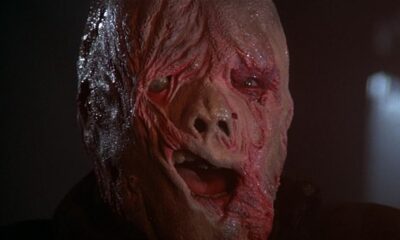

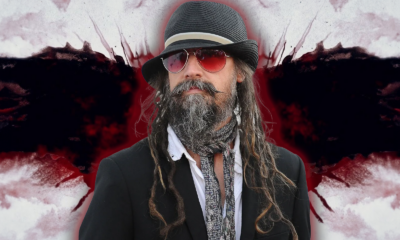

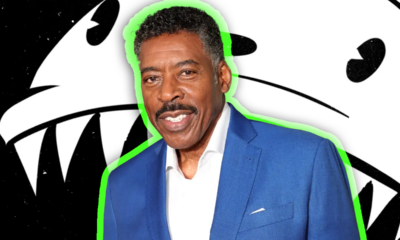






















You must be logged in to post a comment Login